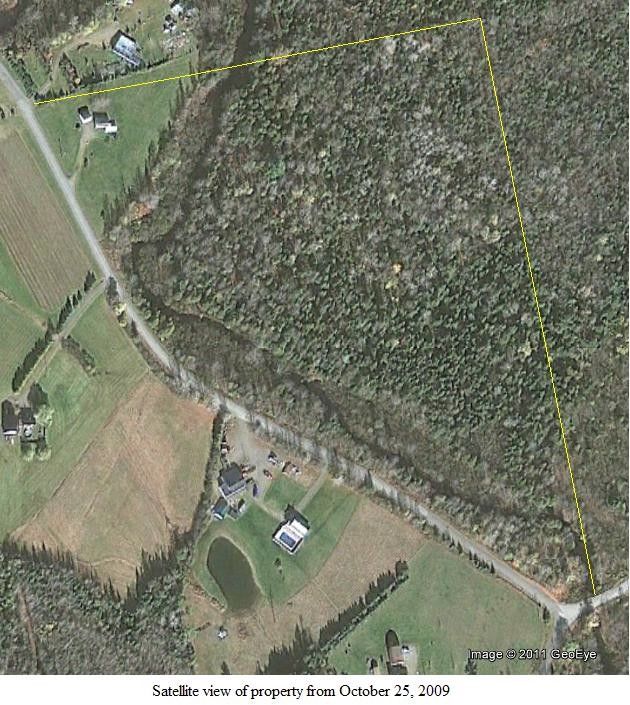Hi folks,
I just bought a country property of 22 acres which has a stream that winds through it for a total of about 2,000 feet. This was definitely a factor in buying the property, and I do intend to make use of this stream to produce energy. Here's a satellite image of the property:

My property is the somewhat triangular shaped parcel to the left of the vertical yellow eastern boundary line. As you can see, the stream enters the property at the bottom of that yellow line, where there is a bridge. The stream is fed by a large bog that collects water runoff from two nearby mountains. There is very little elevation change of the stream (roughly 5 feet of difference at most) as it courses through the property. The widest portion (near the point where it leaves the property at the north end) is about 60 feet across, and the narrowest portion is about 6 feet across. Shortly after leaving my property, it joins with another branch and becomes a Class A whitewater run that is frequented by kayakers and rafters. I'm sure that there will be a lot of water running through my stream during spring runoff, when the snow melts from the mountains, but right now the movement appears fairly slow except in the portions where the stream narrows down and/or shallows out. I'll be moving to the property in December, and will walk the length of the stream at that time to take some photos and video of the portions that appear to offer the best potential for water power. Winters can be harsh here in Maine, and while I'd love to install a water wheel in the stream I am wondering if the flow rate would be sufficient to keep the wheel turning rather than freezing up. If not, then I'll have to devise another method, as it would be pure folly to let such a resource go unutilized.
I'm really enthused about this new property, as it opens up so many possibilities to make use of renewable energy resources. Once I have a good idea of the water resources potential, and have some photos to show, I will come back in here and offer some ideas that I hope to implement. I'll be glad to entertain any suggestions you folks may have, and I thank you in advance.
Rick
I just bought a country property of 22 acres which has a stream that winds through it for a total of about 2,000 feet. This was definitely a factor in buying the property, and I do intend to make use of this stream to produce energy. Here's a satellite image of the property:

My property is the somewhat triangular shaped parcel to the left of the vertical yellow eastern boundary line. As you can see, the stream enters the property at the bottom of that yellow line, where there is a bridge. The stream is fed by a large bog that collects water runoff from two nearby mountains. There is very little elevation change of the stream (roughly 5 feet of difference at most) as it courses through the property. The widest portion (near the point where it leaves the property at the north end) is about 60 feet across, and the narrowest portion is about 6 feet across. Shortly after leaving my property, it joins with another branch and becomes a Class A whitewater run that is frequented by kayakers and rafters. I'm sure that there will be a lot of water running through my stream during spring runoff, when the snow melts from the mountains, but right now the movement appears fairly slow except in the portions where the stream narrows down and/or shallows out. I'll be moving to the property in December, and will walk the length of the stream at that time to take some photos and video of the portions that appear to offer the best potential for water power. Winters can be harsh here in Maine, and while I'd love to install a water wheel in the stream I am wondering if the flow rate would be sufficient to keep the wheel turning rather than freezing up. If not, then I'll have to devise another method, as it would be pure folly to let such a resource go unutilized.
I'm really enthused about this new property, as it opens up so many possibilities to make use of renewable energy resources. Once I have a good idea of the water resources potential, and have some photos to show, I will come back in here and offer some ideas that I hope to implement. I'll be glad to entertain any suggestions you folks may have, and I thank you in advance.
Rick


Comment